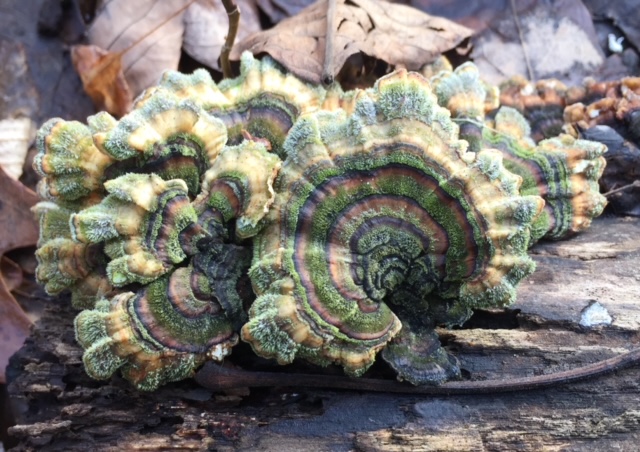
False Turkey Tails, a type of Polyspore Shelf Mushroom
If you are of a certain age, you probably learned in school that all life on Earth is divided into two kingdoms: plant and animal. For years, scientists following Carl Linnaeus’ lead classified fungi (mushrooms, molds, and yeasts) as part of the plant world. Recent studies, supported by molecular research, indicate that fungi are neither plant nor animal. While they are distantly related to plants, they are genetically more closely related to animals…and humans. They are now assigned to their own kingdom.
Fungi are all around us…from microscopic yeasts and molds living in our air and soil…to multi-celled mushrooms that sprout in our lawns, leaf mulch, and dead and living trees. No one knows how many species of fungi exist worldwide. Estimates range from 1.5 to 5 million species, with only about 5% classified.
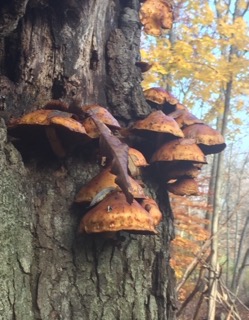
Shelf mushrooms
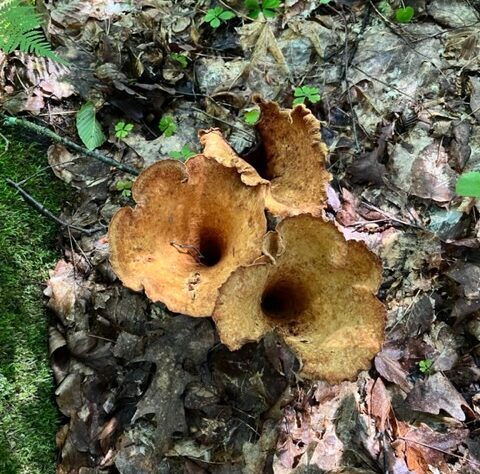
Vase-Shaped Mushrooms
Mushrooms are the fruits of fungal colonies which grow underground or directly on their food source. While mushrooms are short-lived, their underground mats, called mycelium, can live for many years and reach massive proportions.
Mushrooms, unlike plants, do not need sunlight. They lack chlorophyll and cannot make their own food as plants do. Instead, they acquire food by secreting digestive enzymes into their environment and absorbing the dissolved molecules. In contrast, animals and humans use enzymes to process food internally through the digestive system.
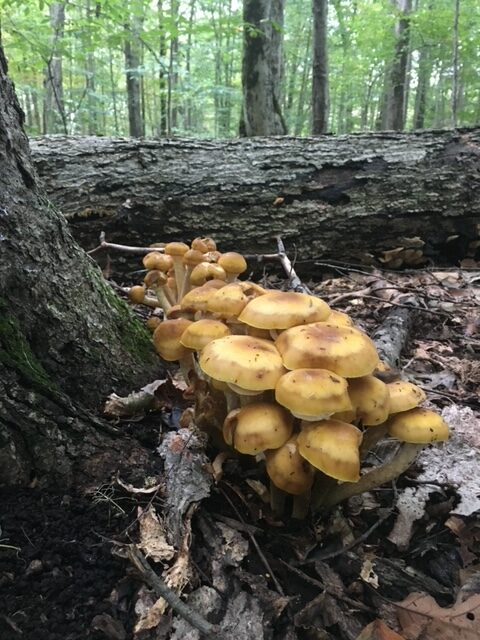
Honey Mushrooms (Armillaria)

Chicken of the Woods
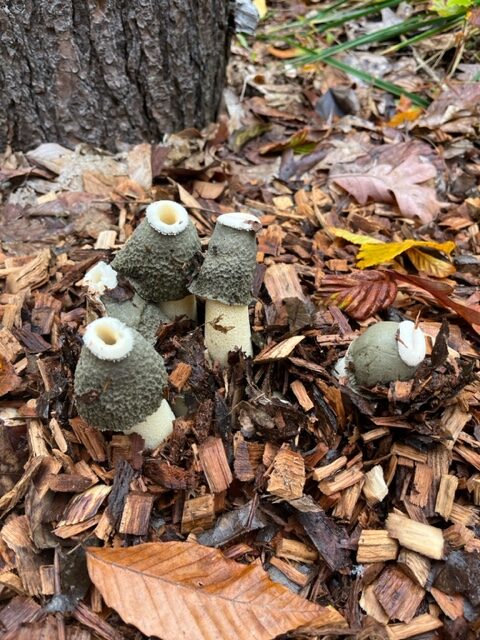
Stink Horns
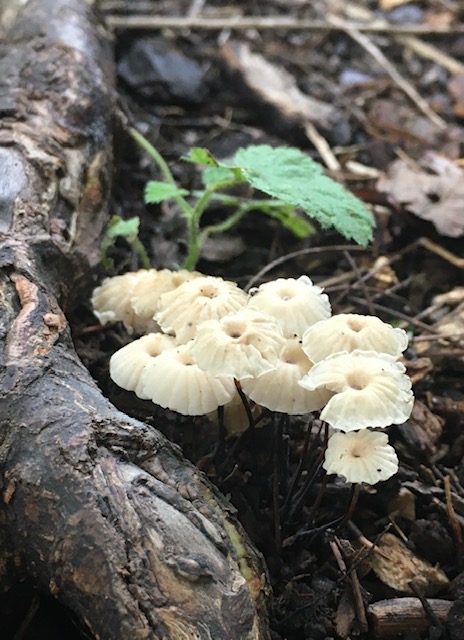
Pinwheels
Fungi have been called the Earth’s greatest recyclers. They are the principal decomposers of dead plants and other organic matter, and they play a fundamental role in the recycling and exchanging nutrients within the environment. Without fungi, dead matter would accumulate and suffocate new plant life. Without decomposition, the nitrogen in dead organic matter would remain locked up and unavailable for new plant growth.
Mushrooms often form symbiotic relationships with plants and even other mushrooms. These interactions are often beneficial, with the fungus and plants swapping essential nutrients. Sometimes, these relationships are parasitic and harmful to the host. Mushrooms reproduce by releasing spores into the air. Cap and tree mushrooms have underlying gills. When these ripen, the microscopic spores drop directly onto the ground. Puffball types, on the other hand, burst open and spew their spores into the air.

Typical Gill Mushroom
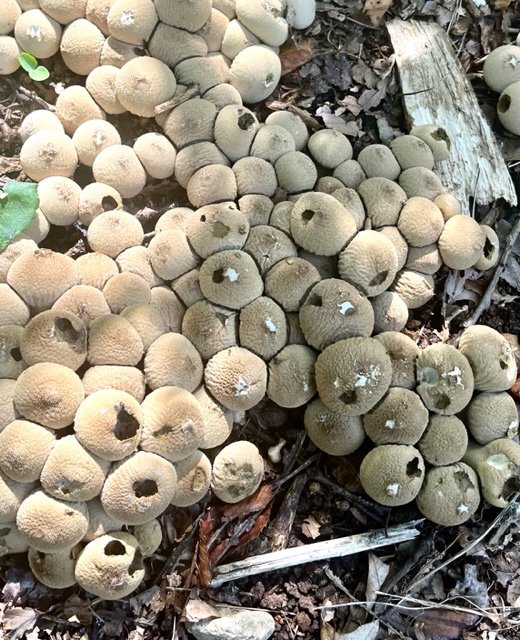
Bursting Puffballs
Looking For Mushrooms
Late summer and fall is a good time to spot mushrooms. They seem to sprout suddenly and sporadically. You won’t necessarilly see them blooming in the same spot twice. They come in all shapes, sizes and colors including: cap mushrooms with attached gills, polypores and shelflike mushrooms; morels and stinkkhorns; cup and vase shaped mushrooms, jellies, corals and puffballs. Here are a few unusual looking ones:
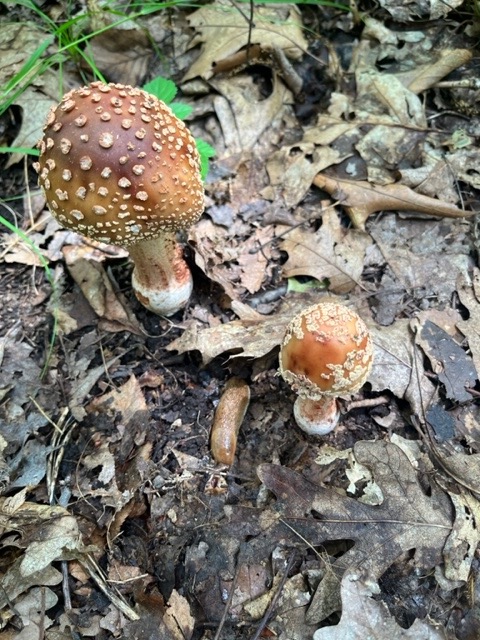
Amanita
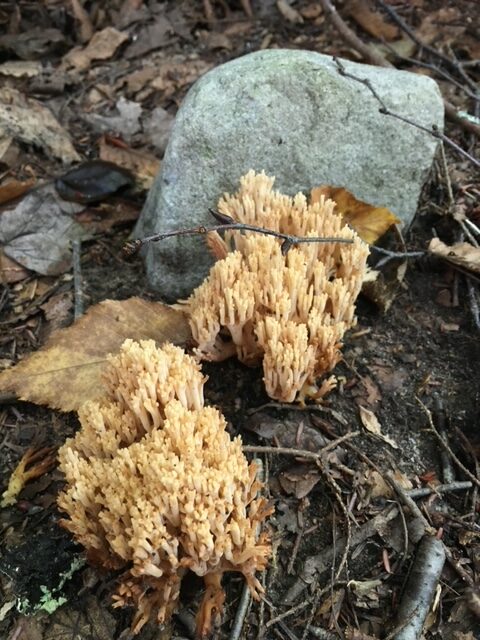
Corals
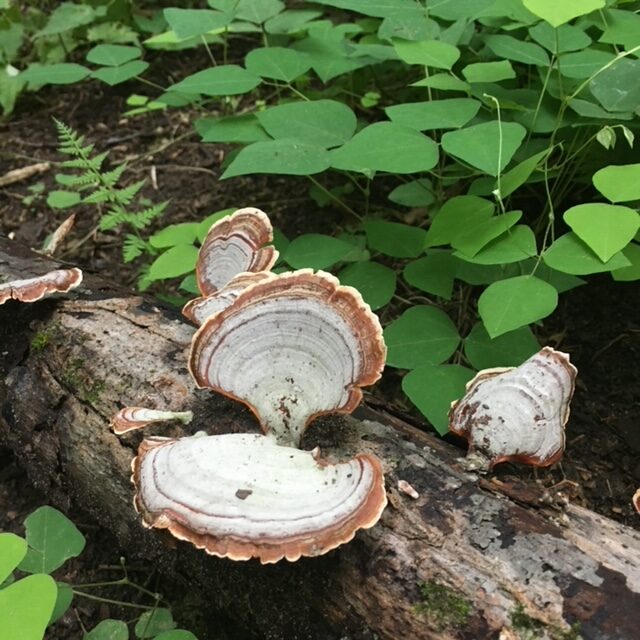
Crusts
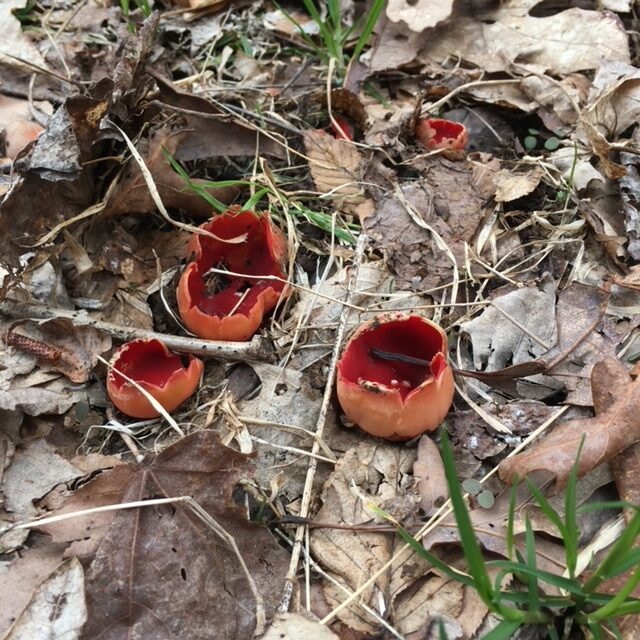
Fairy Cups
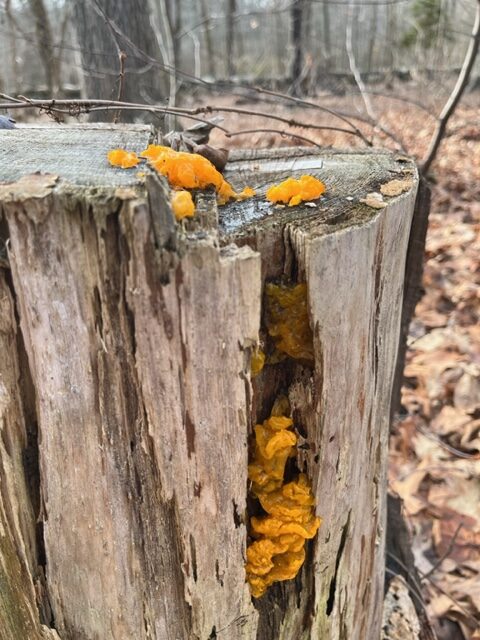
Witch’s Butter (Jelly Fungus)
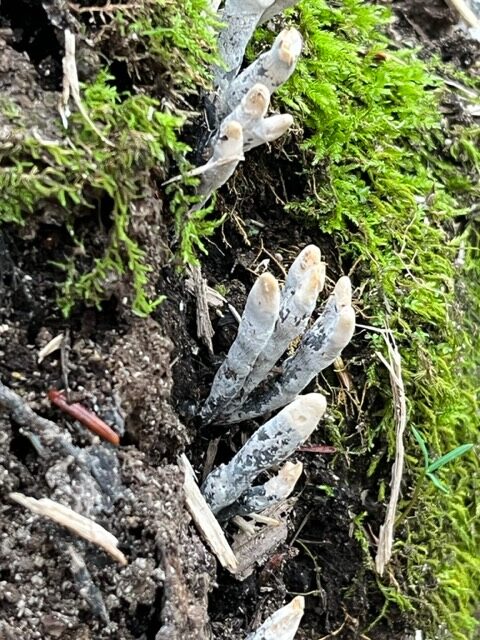
Deadman’s Fingers

Green Russula
Only a handful of wild mushrooms are considered good or safe to eat. The majority are either deadly, mildly poisonous, or simply unappetizing. As many edible species have poisonous look-alikes, it is best to leave mushroom collecting to the experts. Many animals, however, are able to consume mushrooms that humans find unpalatable. These include deer, bears, mice, rabbits, squirrels, chipmunks, slugs, and snails. Ants and termites are known to cultivate their own fungal gardens. Some mushrooms have medicinal qualities, and yeasts and molds are used to make beer, bread, cheese, soy sauce, penicillin, and other drugs.
Very nice write up. Do any chanterelles, morels, or boletes show up on the property?
So many mushrooms and fungi. Great to know about all of these.
Thank you Susan! Informative, educational and fun. Are these photos mostly from our preserves?